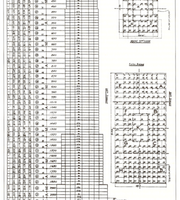Location Based Scheduling
| Line 37: | Line 37: | ||
* The plan serves as an foundation for running following-up on the produced part of the project. Therefore, it can be used as a basis for identifying possible deviations and the consequences of these. | * The plan serves as an foundation for running following-up on the produced part of the project. Therefore, it can be used as a basis for identifying possible deviations and the consequences of these. | ||
| − | LBS is based on the fundamental planning elements: activities, resources and the link between them. In addition to this, LBS also uses: locations, critical '''RÅDERUMSZONE''', location based activity links and resource flow to name a few. A central part of LBS is to create the right flow through the project. A right flow results that the resources in the independent activities flows smooth through the different locations of the project. | + | LBS is based on the fundamental planning elements: activities, resources and the link between them. In addition to this, LBS also uses: locations, critical '''RÅDERUMSZONE''', location based activity links and resource flow, to name a few. A central part of LBS is to create the right flow through the project. A right flow results that the resources in the independent activities flows smooth through the different locations of the project. A geographical location of the activities in the project is added in LBS. |
Revision as of 15:13, 17 September 2015
The Location Based Scheduling (LBS) method is developed to help the construction industry with workflows and planning. The most common method in time and resource planning in construction is still today Critical Path Method (CPM). CPM has been the most dominating method since it was introduced in the late 1950. It has been proved an effective method for time and resource planning of projects. Thus, some critics have been raised about the CPM-method in relation to construction projects, as it is not sufficiently supporting construction management during execution and not to create a continuous and thus economical flow of resources.
The LBS method is developed for the planning and management of workflows and could therefore be expected to be a viable alternative to CPM. The construction industry struggles with the subsequent delays and budget overruns and hopefully the LBS can help the industry to meet these challenges.
The main philosophy about LBS is to create a tact in the construction projects. The different tasks in the projects need to go along in the same flow to create a constant progression without wasting time. To give an example: The carpenter can fix three apartments in one day. The next day starts the painter – but he can fix five apartments in one day. After one day has the painter catch up with on the painter and needs to stop his work until the carpenter has fixed more apartments.
The main task is to divide the construction project into the right amount of locations. The Wiki article will describe how to divide a project into the right locations and how to manage the project with location based scheduling.
5.1 Article Type 1: Explanation and Illustration of a Method
[The articles are expected to adhere to the following structure:]
- Big idea: describe the tool, concept or theory and explain its purpose. The section should reflect the current state of the art on the topic
- Application: provide guidance on how to use the tool, concept or theory and when it is applicable
- Limitations: critically reflect on the tool/concept/theory. When possible, substantiate your claims with literature
- Annotated bibliography: Provide key references (3-10), where a reader can find additional information on the subject. Summarize and outline the relevance of each reference to the topic.
(around 100 words per reference). The bibliography is not counted in the suggested 3000 word target length of the article.
The Location Based (LBS) method is a graphical tool based on a technique developed by Karol Adamiecki in the early 20th century. [1] Karol Adamiecki developed a schedule tool named harmonogram. This tool includes the location as a key element in the scheduling, in contrast to the Gantt Chart. There has been historical examples of the application of Adamiecki's concept. The construction work of The Empire State Building
Contents |
About Location Based Scheduling
- Big idea: describe the tool, concept or theory and explain its purpose. The section should reflect the current state of the art on the topic
'Noget indledende tekst!'
The overall idea in LBS is:
- The plan should ensure that the main goal of the project is archived within the time-, resource,- and qualitative framework applicable to the project.
- The plan works as an overview map of the project, showing the planned way from start to end.
- The plan serves as a basis for analysis and decisions regarding choice of production methods, materials and supplies and other resources.
- The plan serves as a communication tool to convey the structure of the production progress: what should be done when - which resources should be used - in which order should the tasks be carried out.
- The plan serves as an foundation for running following-up on the produced part of the project. Therefore, it can be used as a basis for identifying possible deviations and the consequences of these.
LBS is based on the fundamental planning elements: activities, resources and the link between them. In addition to this, LBS also uses: locations, critical RÅDERUMSZONE, location based activity links and resource flow, to name a few. A central part of LBS is to create the right flow through the project. A right flow results that the resources in the independent activities flows smooth through the different locations of the project. A geographical location of the activities in the project is added in LBS.